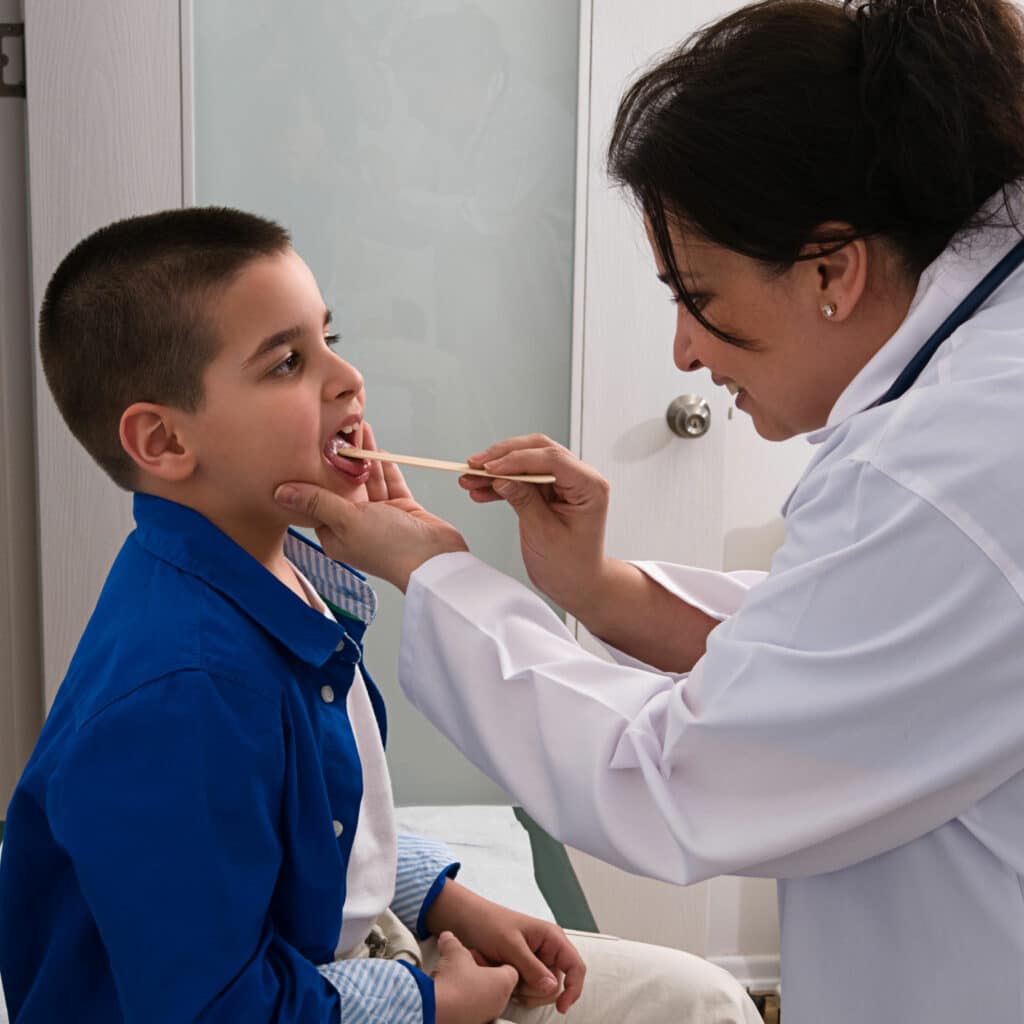

Pediatric ENT Tonsil and Adenoid Disorders
Loud snoring in children is often a sign of obstructive sleep apnea. Other symptoms may include open mouth breathing, poor sleep at night, waking up frequently, and momentary pauses in breathing.
If your child suffers from frequent episodes of strep throat or tonsillitis, they could benefit from a tonsillectomy or adenoidectomy.
Symptoms
The tonsils are located on the outer walls in the back of the throat. The adenoids are located in the back of the throat behind the nasal cavity. Together, tonsils and adenoids form a ring of lymphoid tissue. The crypts and crevices of the tonsils and the folds of the adenoids often harbor an accumulation of bacteria and dead cells which can cause infection and swelling. Frequent infections and difficulty breathing and swallowing can result from cryptic tonsils.
Indications for tonsillectomy include recurrent bouts of tonsillitis, tonsillar swelling causing difficulty in swallowing or breathing, obstructive sleep apnea, or a pocket of infection next to the tonsil.
Indications for adenoidectomy include nasal obstruction due to the swelling of the adenoid tissue, chronic adenoid swelling associated with problems of the middle ear, or obstructive sleep apnea.
Treatment
It is not always necessary to remove both the adenoids and tonsils at the same time, but because of their proximity, they can both be contributing factors to the patient’s problems. If this is the case, a tonsillectomy and adenoidectomy is performed.
Frequently Asked Questions
Why does it hurt to swallow?
Many conditions can cause painful swallowing. Sore throats from a cold, allergic reactions, acid reflux, strep throat, or medications can all make it difficult to swallow. If you or your child experience chronic throat pain, contact our office for a consultation.
How do I know if my child should have a tonsillectomy?
If your child experiences frequent episodes of strep throat or tonsillitis, then may benefit from a tonsillectomy. This is a common procedure that can drastically improve your child’s quality of life.
How common is sleep apnea in children?
At least 2-3% of children have sleep apnea. Most children don’t snore, so if your child snores, is an open-mouth breather, or experiences momentary pauses in breathing at night, then they may have obstructive sleep apnea.
